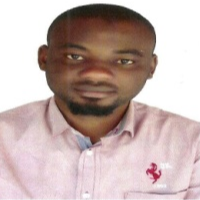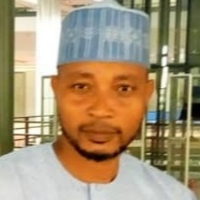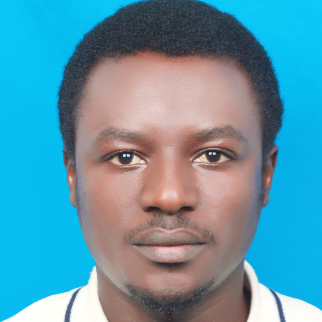International Journal of Intelligent Systems and Applications (IJISA)
IJISA Vol. 13, No. 1, 8 Feb. 2021
Cover page and Table of Contents: PDF (size: 579KB)
Off-line Handwritten Signature Verification System: Artificial Neural Network Approach
Full Text (PDF, 579KB), PP.45-57
Views: 0 Downloads: 0
Author(s)
Index Terms
Neural Network, Signature, Verification, Handwritten, Forgery, Genuine, Online and Offline
Abstract
Nowadays, it is evident that signature is commonly used for personal verification, this justifies the necessity for an Automatic Verification System (AVS). Based on the application, verification could either be achieved Offline or Online. An online system uses the signature’s dynamic information; such information is captured at the instant the signature is generated. An offline system, on the other hand, uses an image (the signature is scanned). In this paper, some set of simple shaped geometric features are used in achieving offline Verification of signatures. These features include Baseline Slant Angle (BSA), Aspect Ratio (AR), and Normalized Area (NA), Center of Gravity as well as the line’s Slope that joins the Center of Gravities of the signature’s image two splits. Before the features extraction, a signature preprocessing is necessary to segregate its parts as well as to eliminate any available spurious noise. Primarily, System training is achieved via a signature record which was acquired from personalities whose signatures had to be validated through the system. An average signature is acquired for each subject as a result of incorporating the aforementioned features which were derived from a sample set of the subject’s true signatures. Therefore, a signature functions as the prototype for authentication against a requested test signature. The similarity measure within the feature space between the two signatures is determined by Euclidian distance. If the Euclidian distance is lower than a set threshold (i.e. analogous to the minimum acceptable degree of similarity), the test signature is certified as that of the claiming subject otherwise detected as a forgery. Details on the stated features, pre-processing, implementation, and the results are presented in this work.
Cite This Paper
N. M. Tahir, Adam N. Ausat, Usman I. Bature, Kamal A. Abubakar, Ibrahim Gambo, "Off-line Handwritten Signature Verification System: Artificial Neural Network Approach", International Journal of Intelligent Systems and Applications(IJISA), Vol.13, No.1, pp.45-57, 2021. DOI:10.5815/ijisa.2021.01.04
Reference
[1]Ahmed, Zainab J., and Loay E. George. "A Recognition System for Subjects' Signature Using the Spatial Distribution of Signature Body." Journal of Southwest Jiaotong University, 2020, 55(1).
[2]Ge, Can, Juanjuan Li, Lina Liu, Gukai Li, Guoxing Yang, Hui Tang, Hanlin Yang, Yifan Xia, Rui Bao, and Haiyu Zhang. "Design and Implementation of Intelligent Singer Recognition System." MS&E, 2020, 790(1).
[3]Shah, Jamal Hussain, Zonghai Chen, Muhammad Sharif, Mussarat Yasmin, and Steven Lawrence Fernandes. "A novel biomechanics-based approach for person re-identification by generating dense color sift salience features." Journal of Mechanics in Medicine and Biology, 2017, 17(7).
[4]Bibi, Kiran, Saeeda Naz, and Arshia Rehman. "Biometric signature authentication using machine learning techniques: Current trends, challenges and opportunities." Multimedia Tools and Applications, 2020, 79(1).
[5]C S. Barhmi and O. E. Fatni, “Hourly Wind Speed Forecasting based on Support Vector Machine and Artificial Neural Networks,” International Journal of Artificial Intelligence, 2019, (8): pp. 286-291
[6]Nur Haizum Abd Rahman and Muhammad Hisyam Lee, “Artificial neural network forecasting performance with missing value imputations,” International Journal of Artificial Intelligence, 2020, (9): pp. 33-39.
[7]F. Yumono, et al., “Artificial Neural Network for Healthy Chicken Meat Identification,” International Journal of Artificial Intelligence, 2018, (7): pp. 63-70.
[8]K. C. Rani and Y. Prasanth, “A Decision System for Predicting Diabetes using Neural Networks,” International Journal of Artificial Intelligence, 2017, (6): pp. 56-65.
[9]Sharif, Muhammad, Muhammad Attique Khan, Muhammad Faisal, Mussarat Yasmin, and Steven Lawrence Fernandes. "A framework for offline signature verification system: Best features selection approach." Pattern Recognition Letters, 2018.
[10]Panchal, S. T. and Yerigeri, V. V.: “Offline Signature Verification based on Geometric Feature Extraction using Artificial Neural Network”, IOSR Journal of Electronics and Communication Engineering, 2018, 13(3): pp: 55-59.
[11]Khuwaja, Gulzar A., and Mohammad S. Laghari. "Offline handwritten signature recognition." World Academy of Science, Engineering and Technology, 2011, (59): pp.1300-1303.
[12]Pinto, João Ribeiro, Jaime S. Cardoso, and André Lourenço. "Evolution, current challenges, and future possibilities in ECG biometrics." IEEE Access 6, 2018: pp34746-34776.
[13]Jain, Anil K., Ruud Bolle, and Sharath Pankanti, eds. Biometrics: personal identification in a networked society. Springer Science & Business Media, 2006, (479).
[14]Kalyani, C. "Various biometric authentication techniques: a review." Journal of Biometrics & Biostatistics 2017, 8(5).
[15]Jain, Anil K., Karthik Nandakumar, and Arun Ross. "50 years of biometric research: Accomplishments, challenges, and opportunities." Pattern Recognition Letters, 2016, (79): pp. 80-105.
[16]Diaz, Moises, Miguel A. Ferrer, Donato Impedovo, Muhammad Imran Malik, Giuseppe Pirlo, and Réjean Plamondon. "A prospective analysis of handwritten signature technology." ACM Computing Surveys (CSUR), 2019, 51(6): pp. 1-39.
[17]Choi, Hyo-Rim, and Tae-Yong Kim. "Modified dynamic time warping based on direction similarity for fast gesture recognition." Mathematical Problems in Engineering 2018.
[18]Kennard, Douglas J., William A. Barrett, and Thomas W. Sederberg. "Offline signature verification and forgery detection using a 2-D geometric warping approach." In Proceedings of the 21st International Conference on Pattern Recognition (ICPR2012), IEEE, 2012. pp. 3733-3736.
[19]Alvarez, Gabe, Blue Sheffer, and Morgan Bryant. "Offline signature verification with convolutional neural networks." Technical report, Stanford University, 2016.
[20]Zafar, Sohail, and Rashid Jalal Qureshi. "Off-line signature verification using structural features." In Proceedings of the 7th International Conference on Frontiers of Information Technology, 2009, pp. 1-3.
[21]Armand, Stephane, Michael Blumenstein, and Vallipuram Muthukkumarasamy. "Off-line signature verification based on the modified direction feature." In 18th International Conference on Pattern Recognition (ICPR'06). IEEE, 2006, (4): pp. 509-512.
[22]Justino, Edson JR, Flávio Bortolozzi, and Robert Sabourin. "Off-line signature verification using HMM for random, simple and skilled forgeries." In Proceedings of Sixth International Conference on Document Analysis and Recognition. IEEE, 2001, pp. 1031-1034.
[23]Souza, Victor LF, Adriano LI Oliveira, and Robert Sabourin. "A writer-independent approach for offline signature verification using deep convolutional neural networks features." In 2018 7th Brazilian Conference on Intelligent Systems (BRACIS), IEEE, 2018, pp. 212-217.
[24]Saini, Parvesh, Ishita Uniyal, and Neeraj Singh. "Offline Graphical Analysis of Signatures Using Geometric Features and Artificial Neural Network." In Intelligent Communication, Control and Devices, Springer, Singapore 2018, pp.1065-1077.
[25]Chandra, Subhash, and Sushila Maheskar. "Offline signature verification based on geometric feature extraction using artificial neural network." In 2016 3rd International Conference on Recent Advances in Information Technology (RAIT), IEEE, 2016, pp. 410-414.
[26]Hafemann, Luiz G., Robert Sabourin, and Luiz S. Oliveira. "Learning features for offline handwritten signature verification using deep convolutional neural networks." Pattern Recognition 70, 2017, pp.163-176.
[27]Soleimani, Amir, Babak N. Araabi, and Kazim Fouladi. "Deep multitask metric learning for offline signature verification." Pattern Recognition Letters 80, 2016, pp.84-90.
[28]Sigari, Mohamad Hoseyn, Muhammad Reza Pourshahabi and Hamid Reza Pourreza. “Offline Handwritten Signature Identification and Verification Using Multi-Resolution Gabor Wavelet.”, 2011.
[29]Hailesellasie, Muluken Tadesse, and Syed Rafay Hasan. "MulNet: A flexible CNN processor with higher resource utilization efficiency for constrained devices." IEEE Access 7, 2019, pp.47509-47524.
[30]Castro, Wilson, Jimy Oblitas, Roberto Santa-Cruz, and Himer Avila-George. "Multilayer perceptron architecture optimization using parallel computing techniques." PloS one, 2017, (12).
[31]Anuse, Alwin, and Vibha Vyas. "A novel training algorithm for the convolutional neural network." Complex & Intelligent Systems 2016, 2(3): pp. 221-234.
[32]S. Albawi, T. A. Mohammed and S. Al-Zawi, "Understanding of a convolutional neural network," 2017 International Conference on Engineering and Technology (ICET), Antalya, 2017, pp. 1-6.
[33]Hwang, Jun Kwon, Geun Young Yun, Sukho Lee, Hyeongjoon Seo, and Mat Santamouris. "Using deep learning approaches with variable selection process to predict the energy performance of a heating and cooling system." Renewable Energy 149, 2020, pp.1227-1245.
[34]Hwang, Jun Kwon, Patrick Nzivugira Duhirwe, Geun Young Yun, Sukho Lee, Hyeongjoon Seo, Inhan Kim, and Mat Santamouris. "A Novel Hybrid Deep Neural Network Model to Predict the Refrigerant Charge Amount of Heat Pumps." Sustainability 2020, 12(7): pp. 2914.
[35]Riachy, Chirine, Fouad Khelifi, and Ahmed Bouridane. "Video-based person re-identification using unsupervised tracklet matching." IEEE Access 7, 2019, pp.20596-20606.
[36]Zhong, Zhun, Liang Zheng, Zhiming Luo, Shaozi Li, and Yi Yang. "Learning to adapt invariance in memory for person re-identification." IEEE Transactions on Pattern Analysis and Machine Intelligence, 2020.
[37]Umamaheswari, J., and A. Akila. "Improving Speech Recognition Performance using Spectral Subtraction with Artificial Neural Network." International Journal of Advanced Studies of Scientific Research, 2018, 3(11).
[38]K. Kancharla, V. Kamble and M. Kapoor, "Handwritten Signature Recognition: A Convolutional Neural Network Approach," 2018 International Conference on Advanced Computation and Telecommunication (ICACAT), Bhopal, India, 2018, pp. 1-5.
[39]Hafemann, Luiz G., Robert Sabourin, and Luiz S. Oliveira. "Learning features for offline handwritten signature verification using deep convolutional neural networks." Pattern Recognition 70, 2017, pp. 163-176.
[40]Liwicki, Marcus, Muhammad Imran Malik, C. Elisa Van Den Heuvel, Xiaohong Chen, Charles Berger, Reinoud Stoel, Michael Blumenstein, and Bryan Found. "Signature verification competition for online and offline skilled forgeries (sigcomp2011)." In 2011 International Conference on Document Analysis and Recognition, pp. IEEE, 2011, pp. 1480-1484.
[41]S. T. Panchal and V. V. Yerigeri., “Offline signature verification based on geometric feature extraction using artificial neural network”, IOSRJECE, 2018, 13(3): pp. 53-59.
[42]S. M. Odeh and M. Khalil, “Apply multi-layer perceptron neural network for off-line signature verification and recognition”, IJCSI, 2011, 8(6): pp.261.
[43]Baltzakis, H., & Papamarkos, N. A new signature verification technique based on a two-stage neural network classifier. Engineering applications of Artificial intelligence, 2001, 14(1), pp. 95-103.




